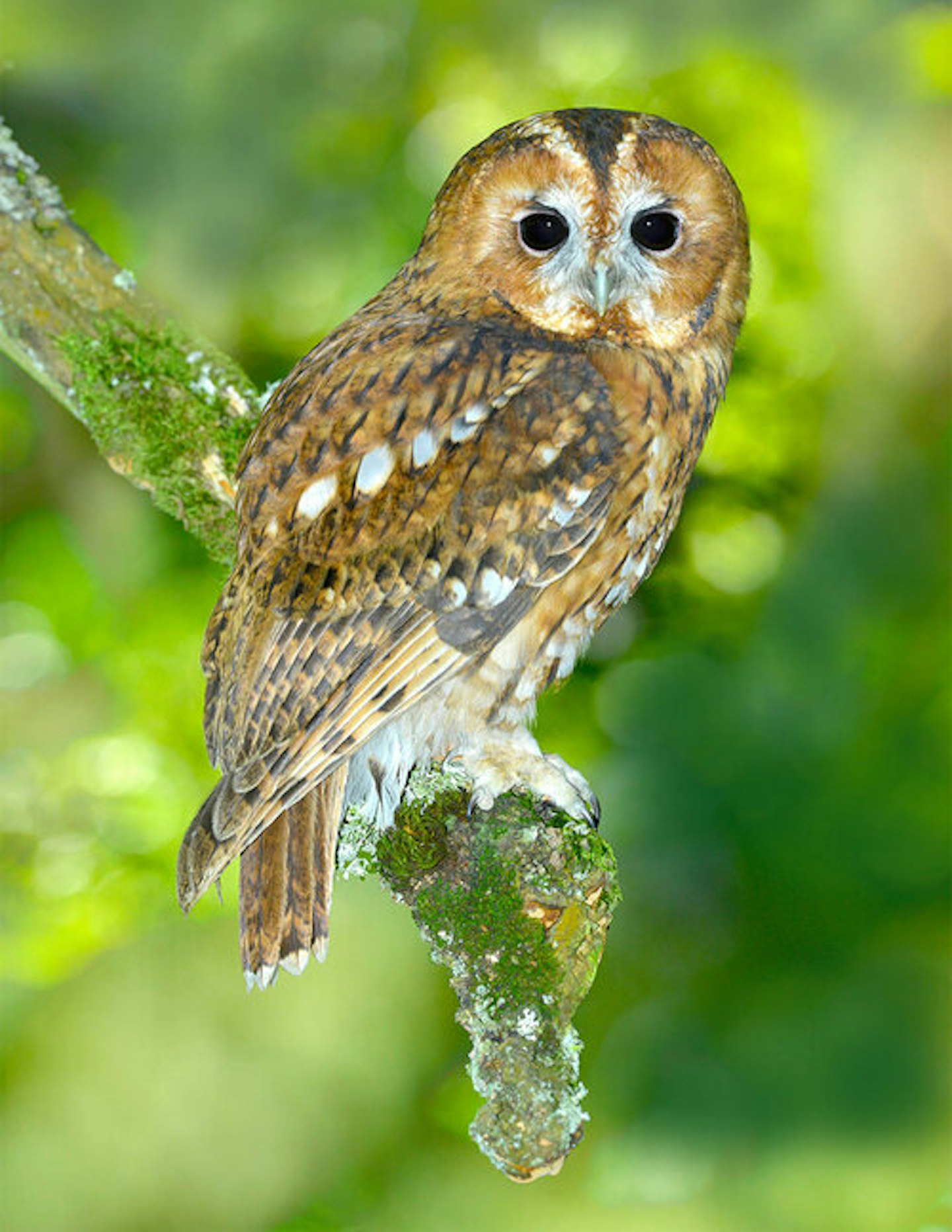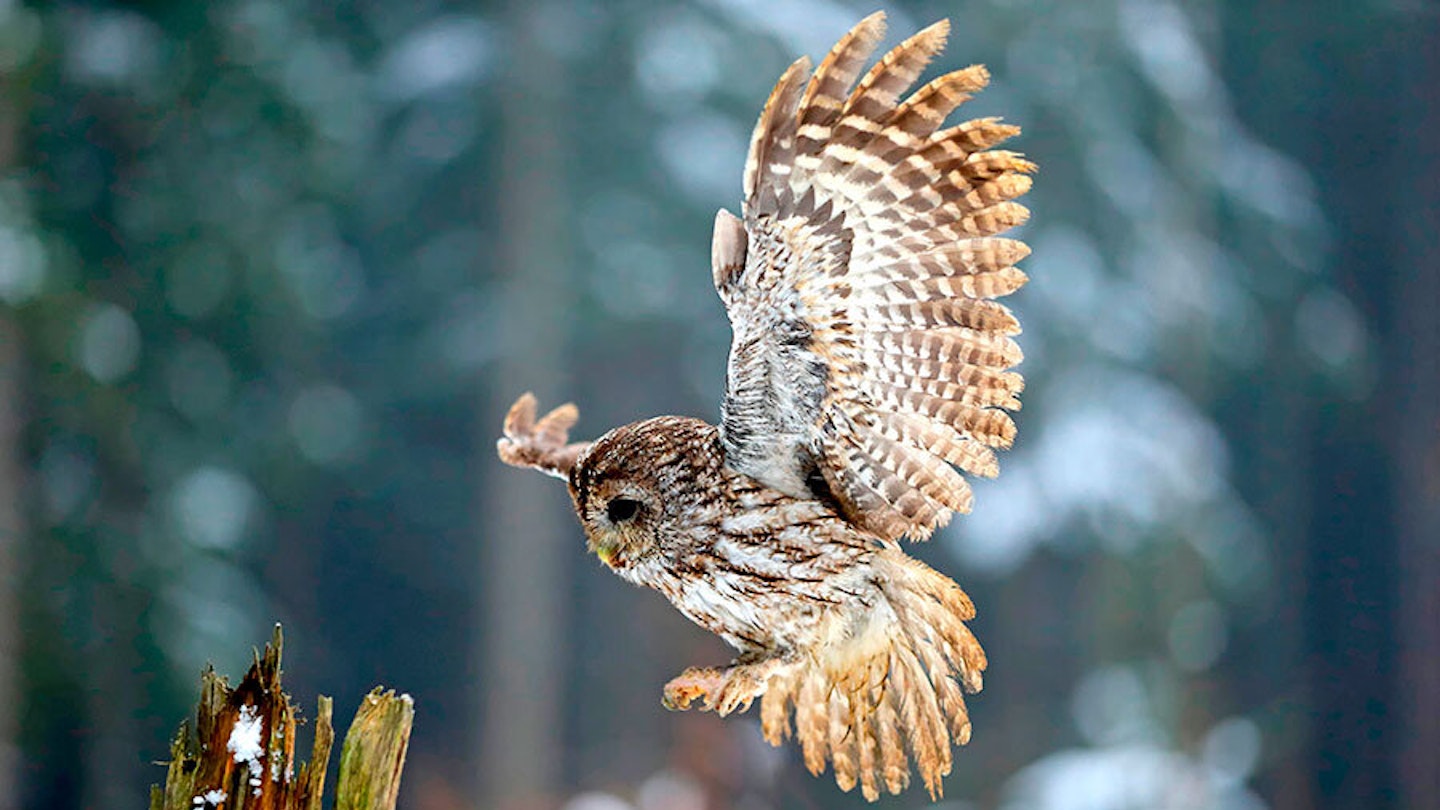By Dominic Couzens
For young Tawny Owls, midsummer nights are a dream. They fledge and leave the nest in June to begin a period of long and blissful dependence upon their parents. Each night, when darkness falls, they sit out on a perch in the crown of a tree, and fill the warm air with squeaky calls, sounding a little like an awkward kiss.
Every so often a parent will pitch up and present the Tawny Owl equivalent of a Big Mac, one of their favourites, a Bank Vole or a Wood Mouse. They swallow it, digest it and, as soon as their hunger returns, they start begging again, incessantly. And so rodent body count swells as the summer simmers on.
On good nights, when the food is easy and the Deliver-whoos are frequent, the owlets must think that the course of their life is set. As long as they can keep away from predators, they must feel as though their comfort will never end.
But it does – brutally. One day, the feeding stops altogether. It is a shock because of the Tawny Owl’s remarkably protracted parental care. The owlets are fed outside the nest for anywhere between two and a half and three months, which is long enough for a Blackbird, for example, to bring up two complete broods. As the nights get longer and cooler, the owlets are very suddenly frozen out. Not only are they not fed, they are not welcome either. They plunge into crisis.
For an average of 18 days, they go into what could be interpreted as a teenage strop, roosting in their parents’ territory. Who can blame them? They are hungry and suddenly alone. They live briefly in the hope that provisioning will start again, but soon the parents won’t tolerate their presence at all. Very quickly, they leave their natal territory for good. Beyond this threshold, the country is all hostile.
Even their prey becomes part of the problem. A mouse or vole might be fast food when brought by a parent, but rodents are animate beings with their own sense of self-protection, not ready to give themselves up. The very length of parental care in Tawny Owls is a direct reflection of the difficulty of catching uncooperative prey.

Adult Tawny Owls are experts at catching food, in multiple situations, and they can turn their hand to snaring everything from roosting birds to hunting bats. Learner Tawnies are amateurs, with no experience to call on in difficult times. Some locations carry higher densities of rodents than others, but juvenile Tawny Owls can only find this out by trial and error.
The intransigence of tricky prey is far from their stickiest problem, however. The biggest issue the homeless owlets face is where to look for food in the first place. When you are a Tawny Owl seeking a territory, the gardens and woodlands of Britain are plastered with ‘No Vacancies’ signs. Tawny Owls, as a species, are exceptionally sedentary – so much so that a single individual or pair may remain in exactly the same territory, with exactly the same boundaries, for its entire life.
While the average lifespan is around five years, many individuals obviously live much longer, with 18 being recorded in the wild. And that means that once a territory is occupied, it might not become available for some considerable time. Once it does, the inheriting individual or pair tend to stick to the original boundaries of the previous owners, down to the last detail – as if Tawny Owl territories had deeds.
And when a territory is occupied, it is a sad fact that the residents are invariably intolerant of intrusion.
Much as a young Tawny Owl might be desperate and in need of a small corner where it might catch a meagre meal to keep alive, the owners have zero sympathy. Their own territorial ownership equates to their personal survival; accepting a tenant could be fatal in the long run.
The strife of young Tawny Owls resounds in the night sky from August through to December. It is the main hooting season, when borders are most likely to be challenged, and the best time for a birdwatcher to enjoy the fabulous, quavering hoot of an incumbent male.
Hooting is contagious; if a male hoots, it sets off a chain reaction of hoots in the neighbourhood, something that often happens shortly after sunset. Sometimes, though, you hear a great deal more than just hooting. Both male and female have sharp ‘ke-wick’ calls, and on occasion you will witness a disturbance, where voices are raised and there may even be some caterwauling. These are intrusions. Under the cloak of darkness, life and death issues are sorted. Physical attacks are common, and frequently both sexes fight together to protect their territories.
By the end of the autumn, the cold reality is that, if a young Tawny Owl cannot find a vacant territory, it will starve. And most do. Nevertheless, the situation isn’t completely bleak. In owl society, birds do lose their mates, which brings opportunities for the new blood – 21% of adults die in a year. There is no grieving, and replacements are welcome. The Tawny Owl is one of the few birds in which researchers have measured how quickly an individual is replaced when it dies.

In one case, a new pair had been formed within two days of a death, and if you think that’s a bit perfunctory, then, in five out of eight situations, it happened within two weeks! Almost invariably, a territory-owner that has lost its mate will have a new partner before the next breeding season. In a sense, you might say that the territory is king. It is the precious resource, and the mate is somewhat expendable!
Nevertheless, this does mean that, after many stressful weeks on the brink of starvation, with no clear future, some owls suddenly hit the jackpot, finding a territory and a mate at the same time, securing not just a chance of survival but a chance to breed, too. And this isn’t unusual.
Other birds fortunate enough to find a territory may do so as a singleton. In that event they are likely to pair up early the following spring, after bouts of spring hooting. Once paired, Tawny Owls remain together until one dies, and their pair-bonds are strong. There are negligible sexual shenanigans among Tawny Owls, although the occasional male might become bigamous. After a fraught autumn, though, Tawny Owl life settles down by the turn of the year. By now, all the previous breeding season’s fledglings are the proud owners of territories, or dead. The winter rids the ground of excess vegetation, leaving less to cover up Tawny Owl prey. Nights are longer, so potentially leaving more time for hunting.
By the next spring, if an owlet has survived, it will have enjoyed months of feeding and practising hunting in its new territory. It is unlikely to breed as a yearling. Instead, it can ride out the weeks and months in a degree of comfort. It is a far cry from the days when all its needs were provided for, but this time, if all goes well, its ‘salad nights’ will last.
TAWNY OWL FACTFILE
Scientific name: Strix aluco
Length: 37-39cm
Wingspan: 94-104cm
UK numbers: 50,000 breeding pairs
Habitat: Woodland
Diet: Mammals, rodents, birds, frogs, fish, worms and insects
WHERE TO SEE TAWNY OWL
This nocturnal bird can be heard calling at night and may be seen in the daytime if inadvertently disturbed from its woodland roost. Pellets can be seen below roosting places, such as up against a tree trunk or among Ivy.
